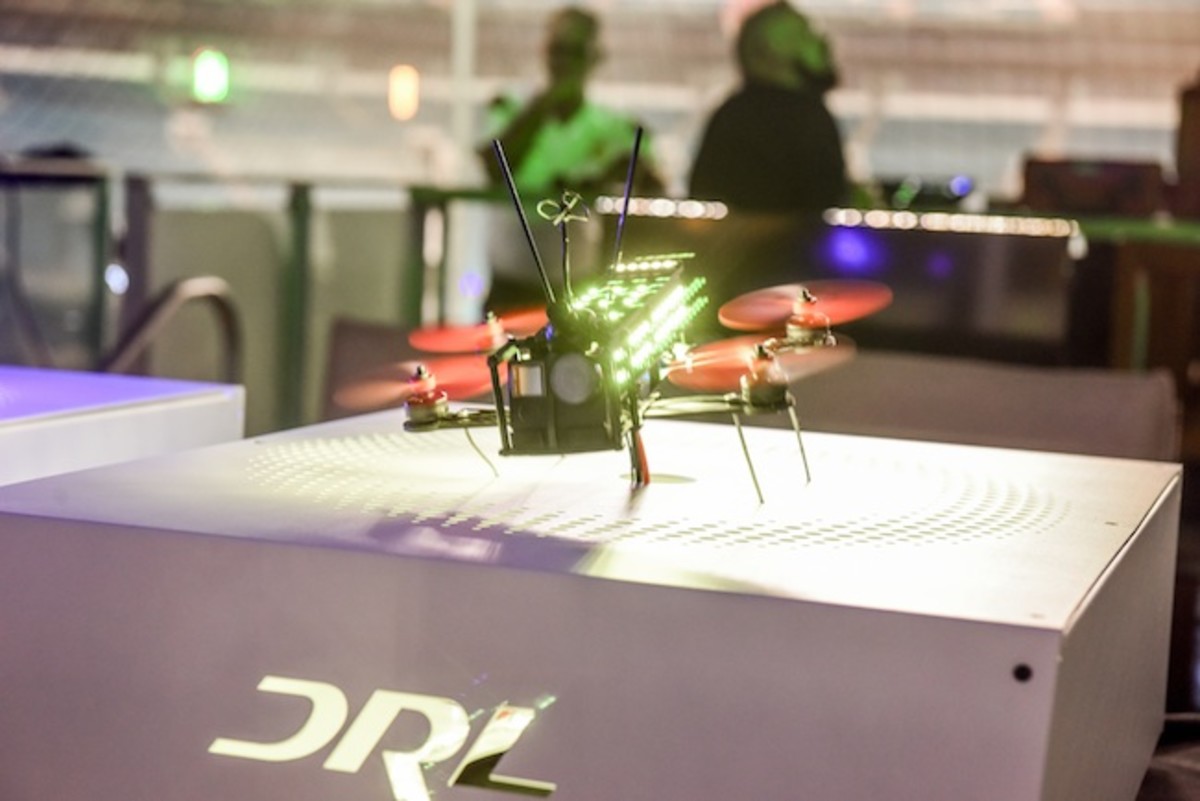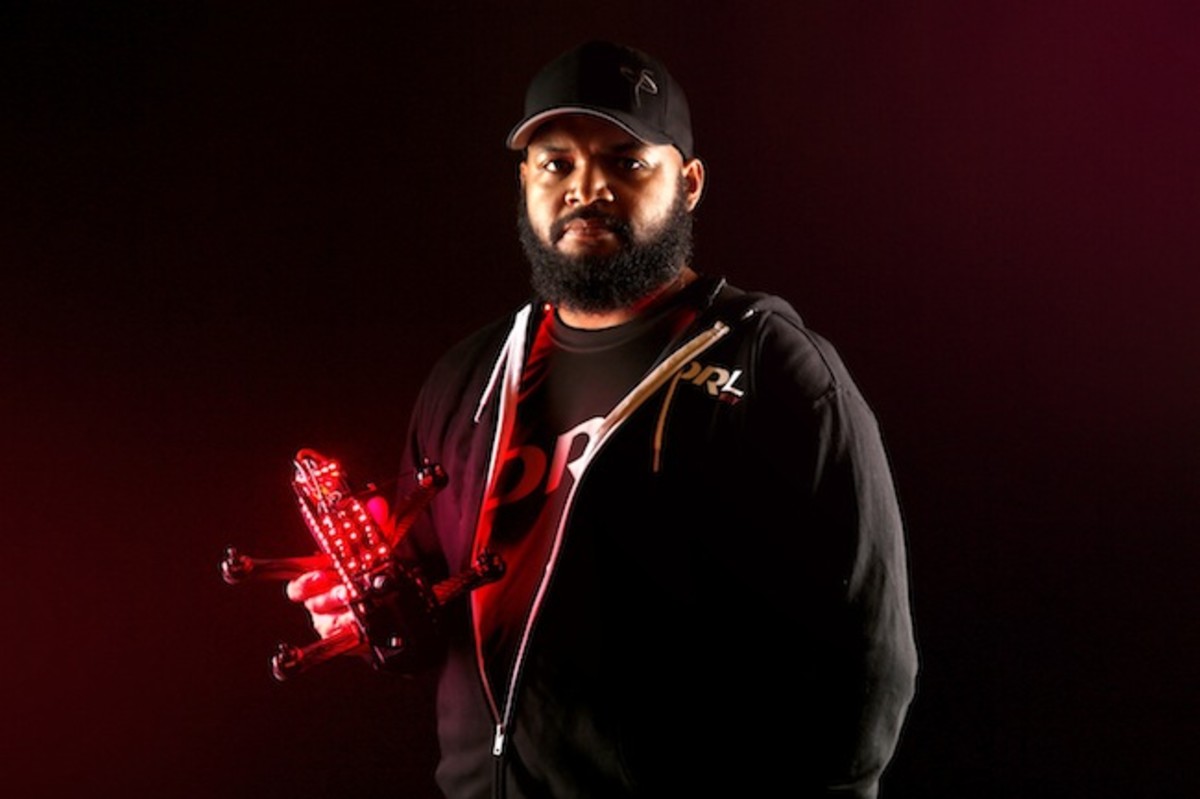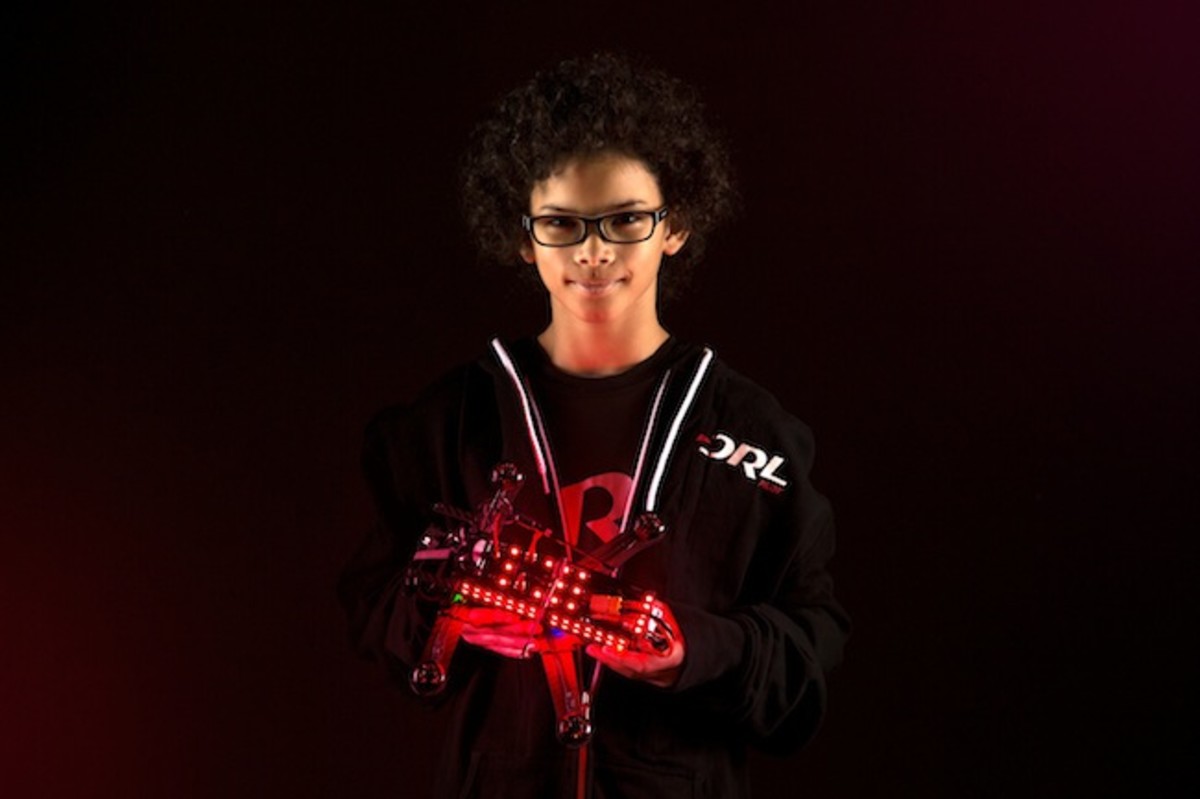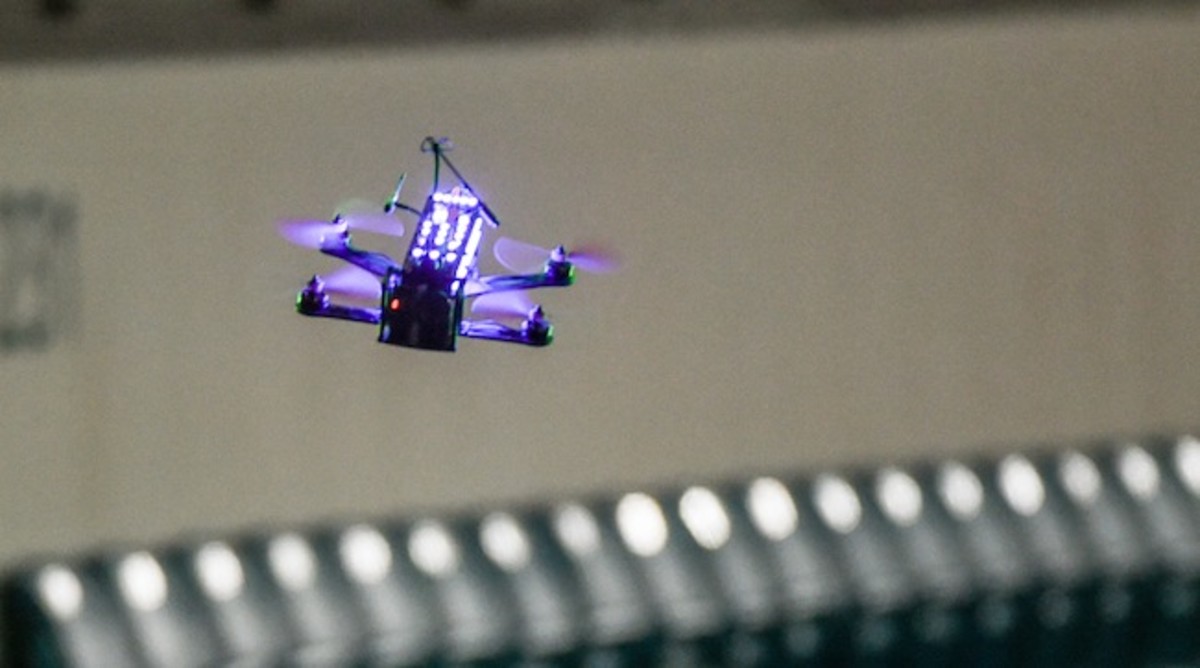Drone Racing League Takes Flight


Drones are awesome. That’s something we can all agree on. Racing is fun. That’s another thing we can agree on. Put them together and what do you get? The Drone Racing League, or the DRL. The DRL invites drone pilots to compete against each other with the goal of one day becoming “the NASCAR of the Sky.”
In January, one of the DRL’s pilots, Conrad Miller (cool pilot code name: Furadi), participated in an event at Sun Life Stadium in Miami. Unlike other racers, Miller brought his 12-year-old son, Sorrell, along — not to sit around and watch, but to race. Though Sorell (cool pilot code name: Zero) didn’t compete, he did race against a couple of people in a practice. Sorrell, who has been called the future of drone racing, actually did better than some of the other DRL pilots.
I recently spoke with Conrad and Sorrell to learn more about drone racing, the DRL, and their father-son relationship.
Why did you start racing? What attracted you to it?
Conrad: I have always been a really competitive person. I have been a diehard race fan. I’ve been watching motorcycle racing since I was a teenager. Anything that involves controlling some type of vehicle, like if I can control a vehicle like an RC car or a quadcopter or a motorcycle, I want to race it against somebody. That is my ultimate goal. I found out about [drone racing] online because I used to fly RC helicopters, and it looked really fun so I had to try it.

Sorell: I was flying with my dad so I could learn the course. It was really scary — all the pressure of everyone else watching me fly. It was extremely fun because I had never flown in a football stadium before.

What exactly does it take to be a drone racer?
Sorell: It takes a lot of skill and patience. You have to be patient throughout the experience because you can’t just pick up on it immediately.
What do you see when you are wearing the goggles you wear when you race?
Sorell: There is a camera on the front of the drone, so when you put the goggles on, you see what the drone does. So, when the drone is 100 feet in the air, it’s almost like you are up there too!
Is that a strange feeling?
Sorell: Yes, especially the first time….
Conrad: It can make you nauseous.
How often do you practice?
Conrad: Every week, a few times a week. I practice more than Sorell. We race almost every weekend. Sorell practices on simulators, as well.
Would you say it is more similar to video games, or playing a physical sport?
Conrad: It’s a good mixture of both. When you put the goggles on, it gives you that videogame element. But then because your brain is so powerful it makes your body go through the same sort of emotions and experiences that you would get from a physical sport. Like when we are racing, our heart rate goes up and we get kind of sweaty and nervous and we shake. It’s similar to racing a go-kart or riding a motorcycle.
Are you tired afterwards?
Conrad: You can be after a full day of racing. It’s kind of traumatic to the body.
Sorrell, how do you feel when you watch your dad fly?
Sorell: I feel that it’s something to compete against because we usually race together. So when I watch him, I think, “I can do that.” So it’s usually jealousy.
Do you ever beat your dad when you fly practice races?
Sorell: Not usually. I usually end up crashing because I’m not as experienced. But I’ve won two races against him. I’ve done it before.
How do you keep yourself calm when you are racing?
Sorell: You have to breathe. If you don’t breathe, that’s when you start acting all weird and crash.
Conrad: That’s kind of the secret to success. When I figure it out, I won’t tell anybody. You pretty much never calm down. There are some really exceptional pilots who have learned to conquer that, and they could race completely calm, but most, I would say 90% of people cannot do it – in any form of racing really. But you know, there are a couple of things that I do when I’m about to start a big race. I’ll remember to breathe, like Sorrell said. That is one of the things I’m working with him on because he lets the stress get to him and I know he forgets to breathe and he starts to get really tense. You have to remind yourself to just calm down and take a deep breath and remind yourself you’ve done this before.
Conrad, what drone do you think is good for kids or beginners who are practicing?
Conrad: In the beginning, you probably want something small that you can fly in the house. I started with a blade nano, but generally you want something small that can fit in the palm of your hand and won’t cause a lot of damage. That will teach you the basics of flying drones.

Sorrell, what are your hopes for your drone-racing career?
Sorell: I hope I end up like my dad and get invited to a lot of races because it was awesome being able to go to all the ones that I have already been to. It would be even better to compete in them with other people.
What do you think the future of DRL is? Do you think it will grow?
Conrad: I think based on how the public is reacting to it already, I think it’s going to grow a lot. The races that DRL puts on are really exciting to watch, and the way that they film it from different angles and the way that they get the story of the individual pilots, I think it will gain a lot of interest.
Photos courtesy of the Drone Racing League
